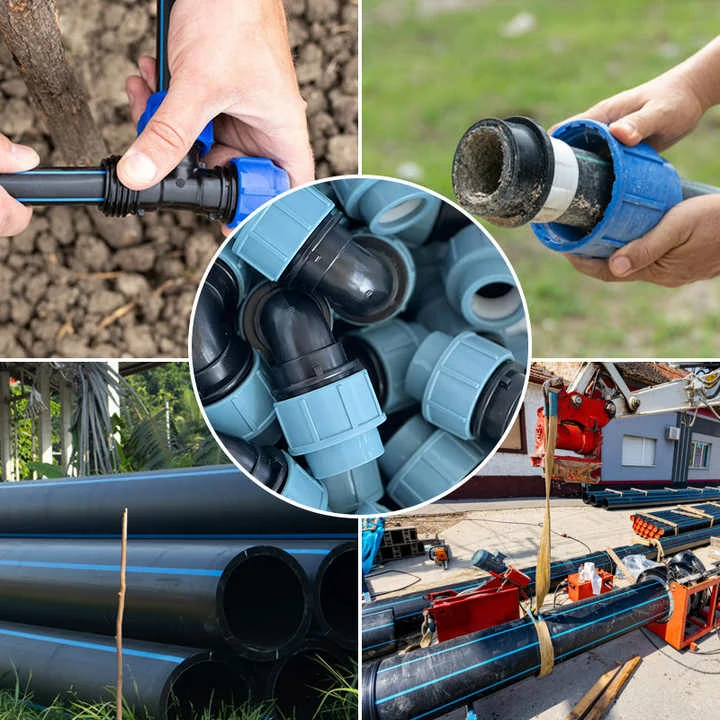What Are HDPE Pipe Connectors?
High-Density Polyethylene (HDPE) pipe connectors are essential components used to join HDPE pipes in various piping systems. These connectors ensure leak-proof, durable, and flexible connections, making them ideal for water supply, gas distribution, sewage systems, and industrial applications.
Types of HDPE Pipe Connectors
1. Butt Fusion Fittings
- Description: Joined by heating and fusing pipe ends together.
- Applications: High-pressure systems, water mains, gas pipelines.
2. Electrofusion Fittings
- Description: Uses embedded heating elements to melt and join pipes.
- Applications: Repair work, tight spaces, municipal water networks.
3. Mechanical Fittings (Compression Couplings)
- Description: Uses compression seals for quick assembly without welding.
- Applications: Temporary installations, repairs, low-pressure systems.
4. Flange Adapters
- Description: Connects HDPE pipes to metal flanges.
- Applications: Pump stations, valve connections, industrial piping.
5. Saddle Fittings
- Description: Allows branch connections without cutting the main pipe.
- Applications: Irrigation, water distribution, sewage systems.
6. Elbows, Tees, and Reducers
- Description: Used for directional changes, branching, and diameter adjustments.
- Applications: Plumbing, drainage, chemical processing.
Key Applications of it
- Water Supply & Distribution (municipal, residential, and industrial)
- Gas & Oil Pipelines (corrosion-resistant and leak-proof)
- Sewage & Wastewater Systems (chemical and abrasion-resistant)
- Mining & Industrial Processes (durable under harsh conditions)
- Agriculture & Irrigation (flexible and UV-resistant)
Conclusion
HDPE pipe connectors offer versatility, durability, and cost-efficiency, making them a preferred choice in modern piping systems. Selecting the right type depends on factors like pressure requirements, installation method, and environmental conditions.


